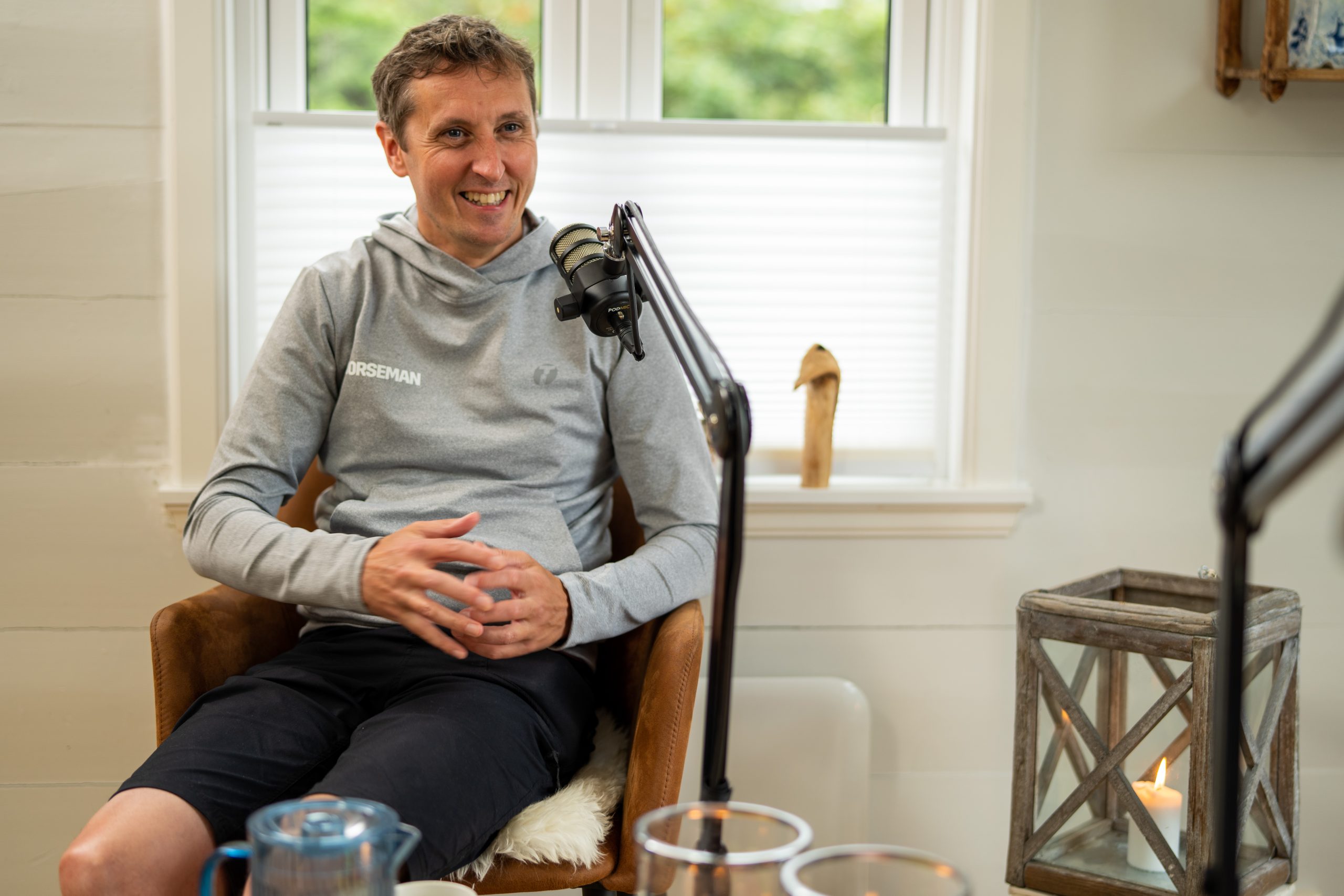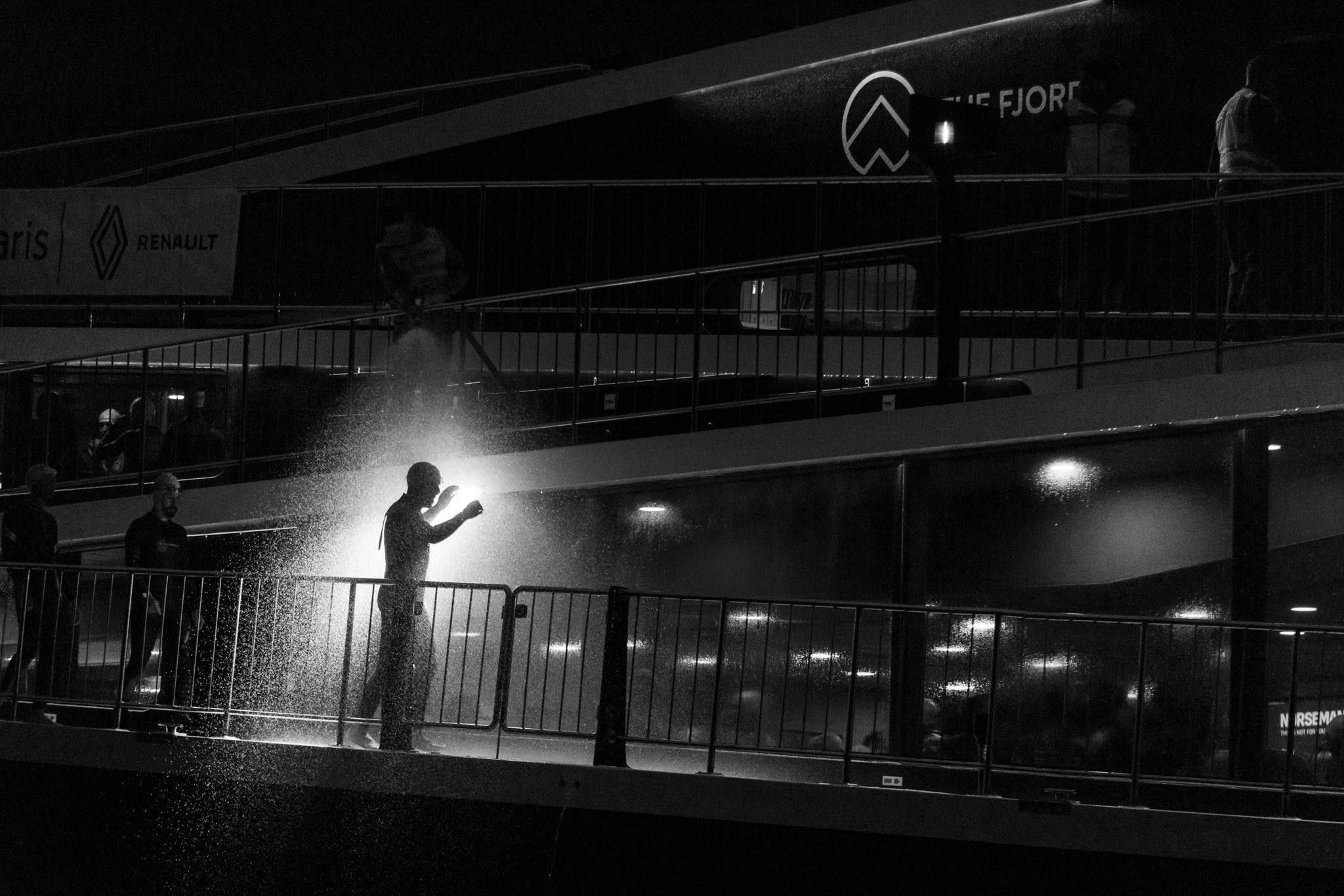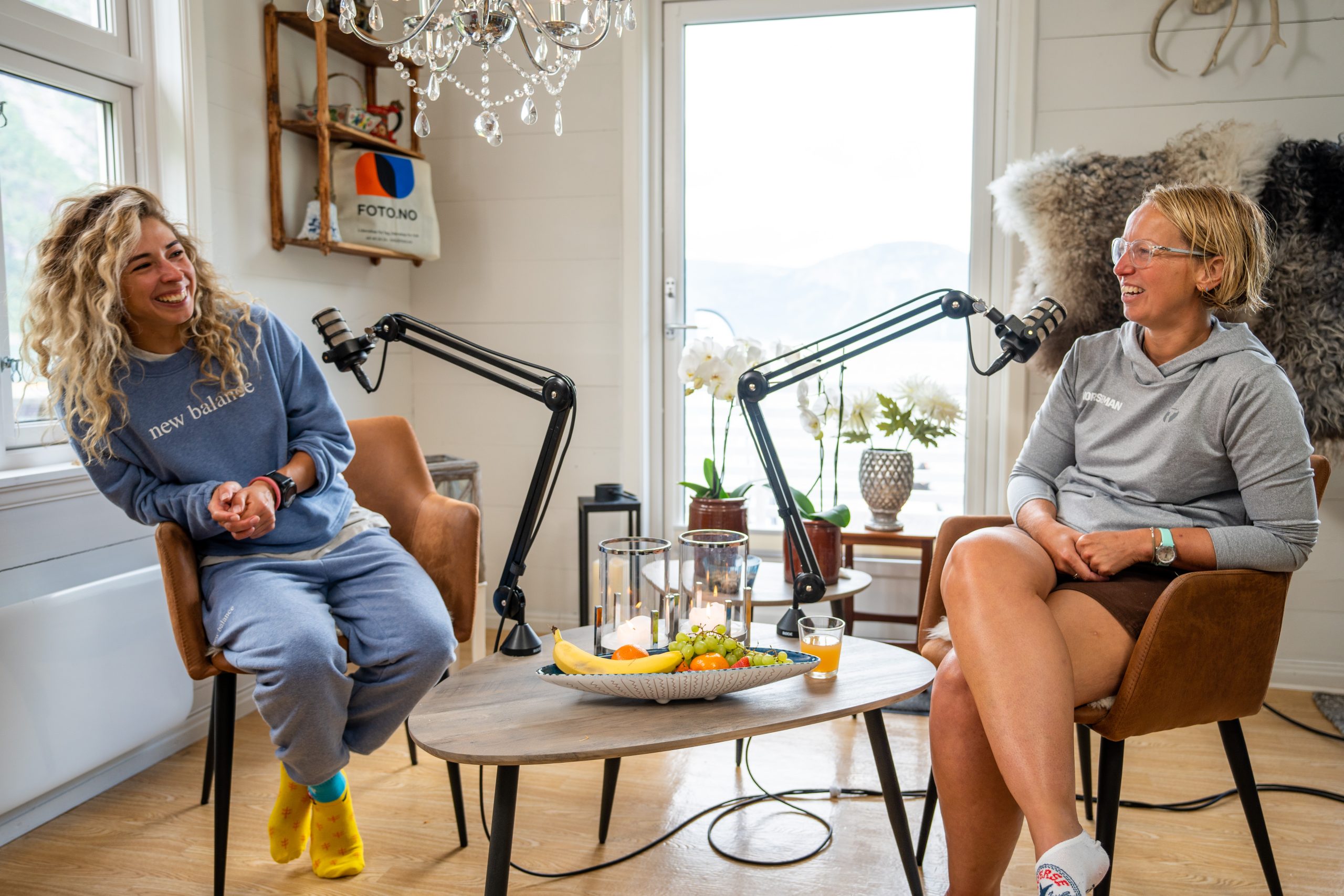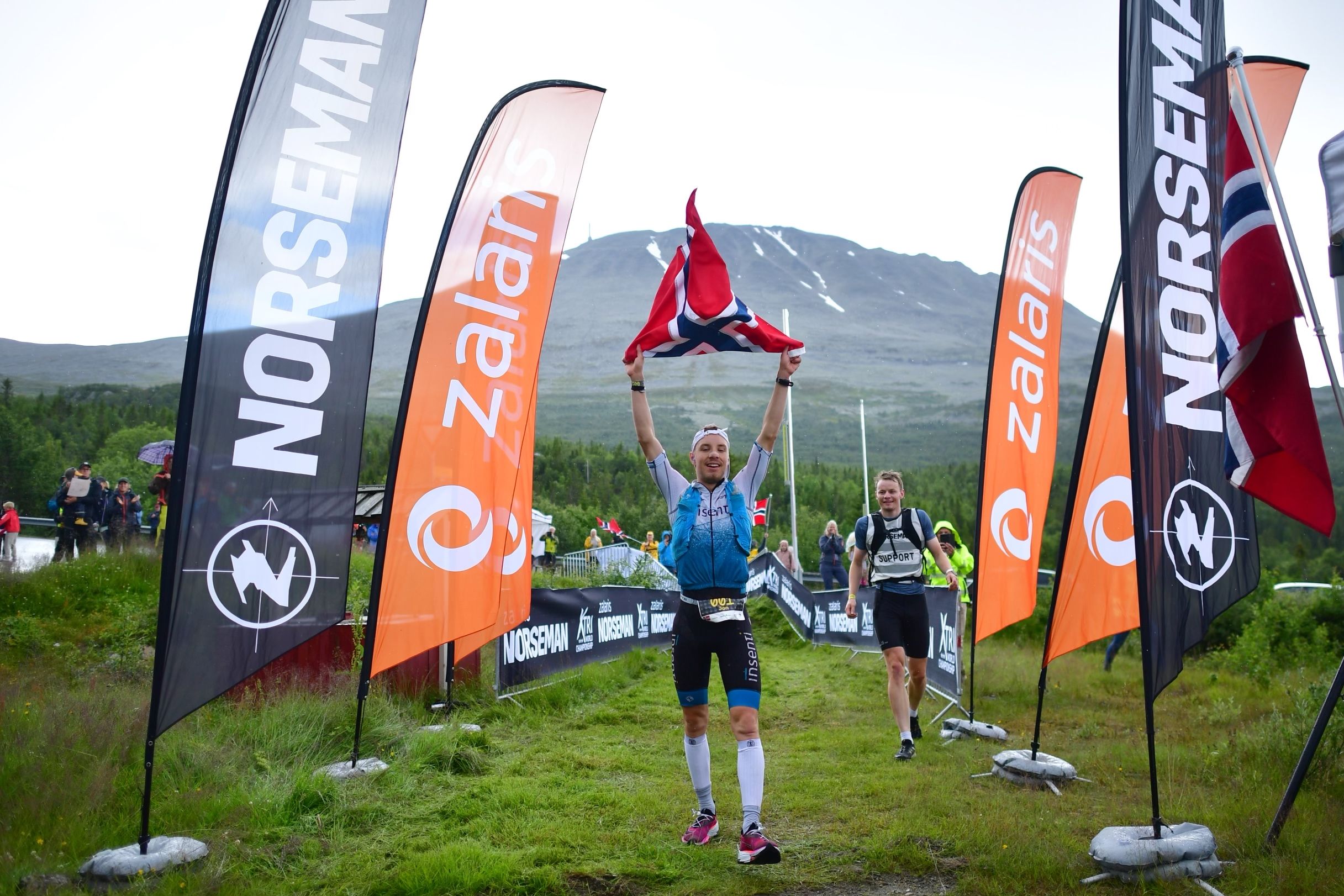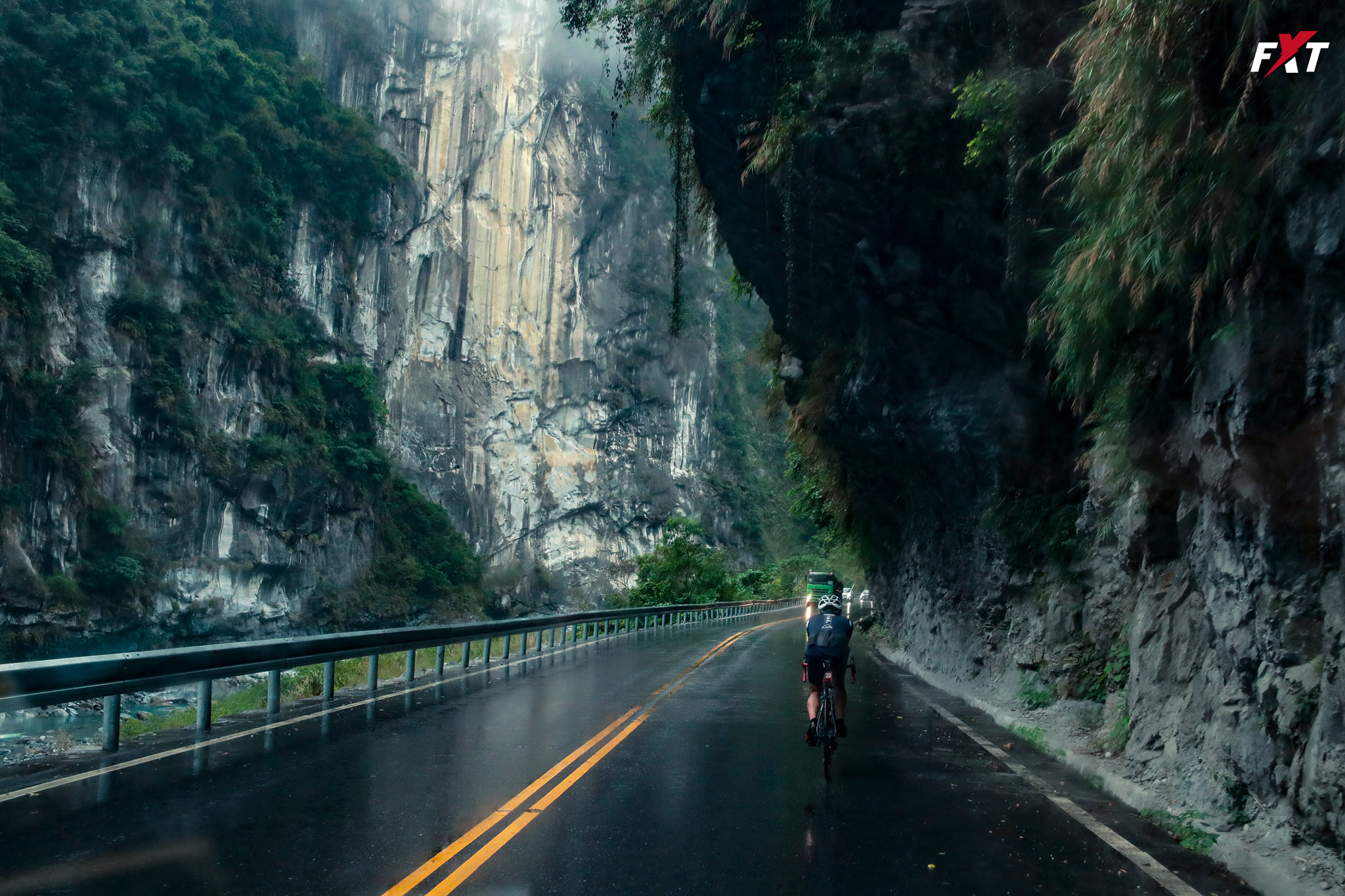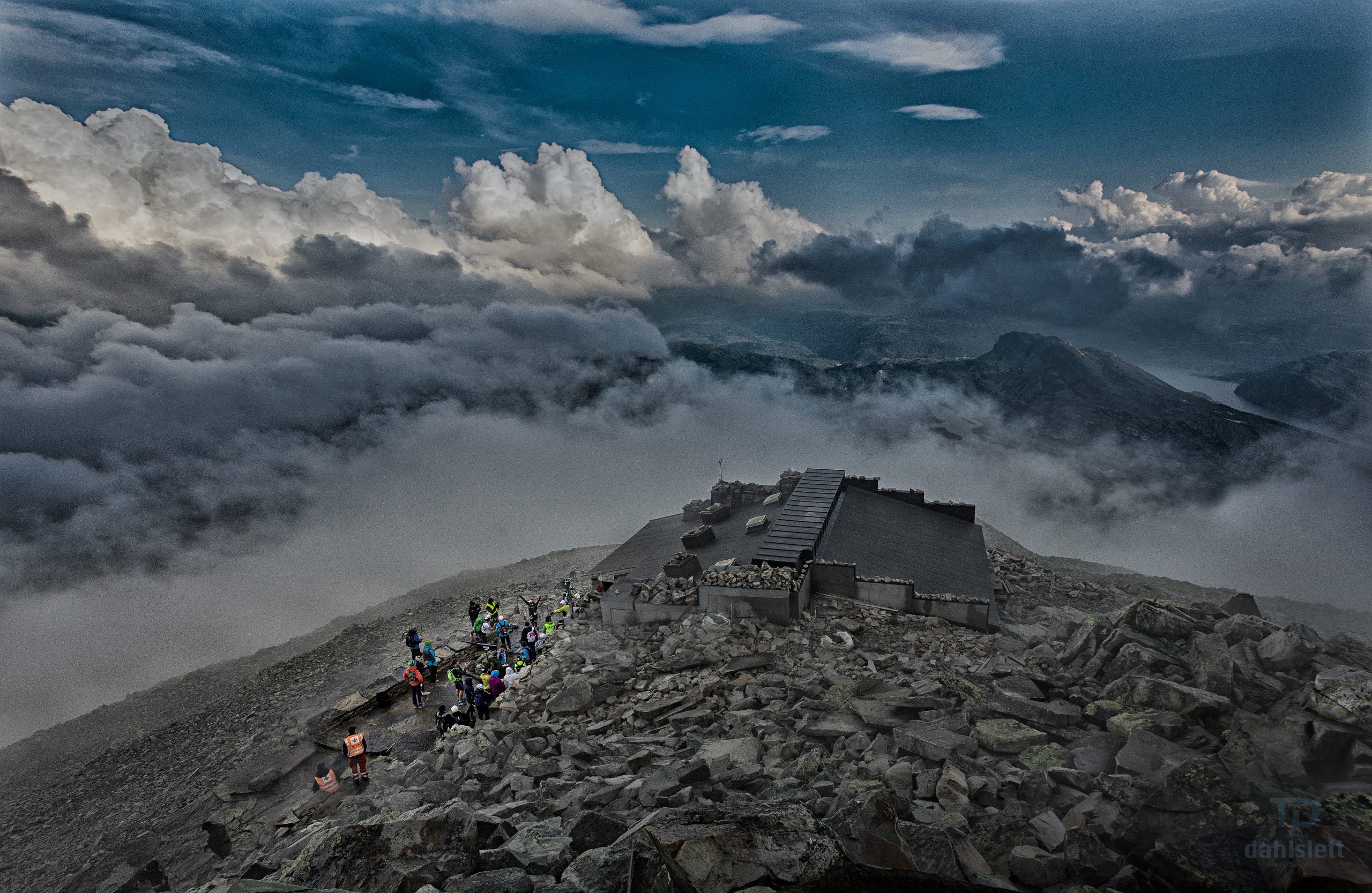Instead of having your friends and family, you have a local taxi driver with a tiny little Suzuki from 1985.
Stuart McInnes
Listen to the episode on:
- Apple Podcasts
- Spotify
- iHeart Radio
- Spreaker
- Google Podcasts
- Castbox
- Deezer
- Podcast Addict
- Podchaser
Scroll down for the full episode notes with accompanying film and images.
Helen Webster:
Hi Stuart, welcome to our media headquarters. So you’re the CEO of the XTRI World Tour, yet you are here at Norseman, which is the XTRI World Championship race.
Stuart McInnes:
That’s correct. Absolutely.
Helen:
Welcome.
Stuart:
Thanks.
Helen:
Tell us a little bit for those who don’t know what the tour is all about.
Stuart:
The tour is all about a range or a series of races which emulate Norseman around the world. So the same field, the same extreme elements of triathlon, and ultimately, the qualifiers, the winners of those races, end up here at Norseman, at the XTRI World Championship.
Helen:
And how many races do you have now around the world?
Stuart:
We have 16 races around the world.
Helen:
And which was the first?
Stuart:
Well, the first was obviously Norseman, but the first in the line after that was CELTMAN!, in Scotland.
Helen:
In our lovely home in the UK, where we’re both from.
Stuart:
Absolutely, yes.
Helen:
Yeah. So how does it feel to be the person responsible for taking that kind of spirit of Norseman around the world and how difficult is that?
Stuart:
It’s quite exciting. It is difficult because you have to try and convince international teams, or maybe not convince is the right word, but maybe help them, to teach them to create a product that’s very like Norseman, in homage to Norseman. And that can take a bit of, I was going to say skill, but that would be buttering my own toast and that, so no, not skill. It takes some effort.
Helen:
And there’s such different locations as well. And I know we were chatting a little bit about this yesterday, but how do you take something as legendary and as iconic as the race that starts here in Eidfjord and try and create things similar around the world in places where the people are different, the cultures are different and the scenery is different.
Stuart:
Well, you said that to me yesterday. You said, “Is there a recipe for it?” And there’s not really a recipe. There’s no written recipe. It is more like alchemy. It is more a kind of process of chemical reactions and taking feelings and concepts and mixing them together to create a product.
Helen:
So tell us a little bit about some of the races in the series and for example, describe a couple that stand out for you that are really different to Norseman yet still have that feel.
Stuart:
Yeah, they’re all designed to have the same feel, if that makes sense, but with their own ingredients, so their own local culture. So if we look at the newest one we had this year, in Nepal, then if you go there having been to Norseman, it’s nothing like Norseman. It’s a completely different thing, completely different concept altogether. But the feeling the athletes get is very similar and that’s an indescribable, intangible feeling. But it has warmer water, it has much higher mountains, the support car system is different. Instead of having your friends and family, you have a local taxi driver with a tiny little Suzuki from 1985.

Helen:
Love it.
Stuart:
He can’t speak English, and it’s hilarious. But that creates a brilliant atmosphere for the race. And by the end of the race, all of the taxi drivers could speak English.
Helen:
So do you see at all, is it almost … Because one of the things I love about Norseman is … I’m probably never going to do the full race cause I love swimming, but I’m not very good at the rest of it. But if you enjoy triathlon, what a way to see a country and experience an adventure in a different place.
Stuart:
Absolutely and I think that’s one of the fundamental points of XTRI World Tour is that there is a triathlon, but you can have a triathlon anywhere. But these races are just so much more special because of the location, because of the local culture, because of the scenery, because of the journey to get here. All of those elements make something that’s just completely different from any other mainstream triathlon. Still a triathlon, though.
Helen:
Yeah. And how long does it take you to plan a new race?
Stuart:
Years. It does take years, from the initial contact from an organizer to the first test race. We always do a test race, which we call a prospect race, usually takes two to three years. It’s a long time. Checking maps and testing and all sorts of things.
Helen:
That’s exciting, though. It must be a great thing to be able to be part of.
Stuart:
It’s a great thing to do when you’ve had a conversation with someone over a coffee and then two or three years later the race appears and you see athletes out there enjoying themselves on the course. That’s a good feeling for sure.
Helen:
And how is the feeling with athletes at the races? Cause we were down at the little kind of socials from this morning and seeing people arriving in Eidfjord for the first time and that mixture of excitement and nervousness. Is that how you see all your races?
Stuart:
We do. And actually, the point about arriving in Eidfjord is amazing. The race has to be in a location that is a journey to get to, because part of the excitement of coming to Norseman is driving across the Hardangerfjord and usually the weather’s weird. So there’s breaks in the cloud and there’s sun beams and there’s a bit of rain, hail, sleet. All sorts of stuff in the summer. It’s a huge journey. And then coming down the hill through the tunnels and arriving in this location, it’s amazing. And we don’t have races where you just fly into an airport and drive around the corner, you’re there. There has to be an element of a journey involved as well.
Helen:
Yeah. And do you find that you have competitors? Cause obviously you can qualify for Norseman at the tour races and do you have people trying to pick a race that’s slightly easier or less competitive?
Stuart:
Yes, yes. Definitely, and particularly the girls, because some of the races they have much smaller fields and they have much smaller female fields because they haven’t yet gone through the process of being able to increase that, as we’ve done in the bigger races. So they’re almost guaranteed a slot if they do some of the smaller races. So there’s definitely a bit of picking and choosing going on there, which is a ballot loophole maybe, but a good ballot loophole.
Helen:
I think the thing is, though, all competitors are different, aren’t they as well? So for example, I know if I was trying to qualify for Norseman, I wouldn’t be going to do a race somewhere really hot because I’d be really bad at it. But there must be a little element of people picking a race that maybe works for them?
Stuart:
That suits them. Absolutely. And they do have different elements. Some have more trail running, some have colder water, some have higher mountains. They’re not all the same. And you can never compare times across our races because even though the distances are similar, the courses are so different.
Helen:
Yeah. I think the thing with Norseman is even though it’s the world championship race and it’s the originator, there is that kind of little chat about which is the hardest of the XTRI races. Do you have an opinion?
Stuart:
No, I don’t. And I refuse to be held to account on that one because how you define extreme and how do you define hard is very, very difficult. And also, across the disciplines, definitely there are some races with harder runs than Norseman, but maybe Norseman has a much harder bike than many of the other races. So how do you define it? You don’t. You could look at finisher times and say, “Well, the ones with the longest finisher times are the hardest.” But that doesn’t really follow either because at the moment, the Himalayan race has the longest finisher times, but that’s because of the altitude. The speed of the athletes above three and a half thousand meters is like a snail. So maybe the altitude makes it hard, I don’t know.
Helen:
Yeah, it almost feels like… Do you remember playing Top Trumps when you were a kid? And you had all the different cards.
Stuart:
That’s funny because I did once create a Top Trumps game for XTRI races as a concept when we thought we would print cards and have… but then we decided it was a bit silly.
Helen:
Yeah, so tell us a little bit about, we were chatting about the Starvation race. Tell us a little bit about that because that sounds really exciting.
Stuart:
Well, that’s our newest one in the States. So that took place in July. It’s different from the other races because of the heat, actually. So it has the normal elements. It’s a really remote place, incredible landscape, difficult climbs, all that, but 40 degrees of heat. So that definitely added to the difficulty of that race.
Helen:
And how did it get its name? Because it’s got a name like no other triathlon.
Stuart:
Yes. It’s a bit of fun involved with the name, but the reservoir that they swim in is called Starvation Reservoir. And having not been there and discussing with the organizers, we came to the conclusion that this was a good idea. We could play with this. Fuel or be fuel. And then when I arrived there, the first poster I saw next to the lake was about the local wildlife and it was all vultures. So we were absolutely spot on with that.
Helen:
Yeah, you need almost a kind of vulture on the t-shirts or something or a logo with a vulture on it.
Stuart:
Well, it is a wolf. Their logo is a wolf so they’re getting there.
Helen:
Super. I love it. I love it. So what’s next for the world tour? Anything you can tell us about?
Helen:
Super. I love it. I love it. So what’s next for the world tour? Anything you can tell us about?
Stuart:
Well, we don’t have a huge number of new races lined up. The only one we have in the pipeline is Morocco, in Southern Morocco, which has actually been on the cards since 2019 but has been shelved for the usual reasons. So that should come back to life next year. So that will be the newest race. But the biggest thing we have done recently is to launch a half distance event, which we call SOLO POINT FIVE. We’ve designed really difficult half distance courses with existing organizers. So they will be on the same race courses as the full distance events, but they’ve been designed to be incredibly difficult and have no support. So they’re solo.
Helen:
Wow.
Stuart:
That makes just that little bit extra hard for them.
Helen:
Yeah, so that’s an extra little challenge, isn’t it? You don’t get the support and also cause the distance is shorter. I guess the psychology though is to try and maybe race harder, do you think?
Stuart:
There’s that, yes. But what we’ve done obviously is to add more climbing in to make the trails more difficult so it’s not an easy half.
Helen:
So when do those launch? When can people enter those?
Stuart:
Well, the first one was this year. We’ve done it already. We did it in CELTMAN!, in Scotland.
Helen:
Fantastic. And did you see familiar faces at that race or was it new people?
Stuart:
We did see a few who had done the main race before and know it well and wanted to try it. But also, we saw many, many, many new faces, which is the point. We want to have new athletes. So they came to do the half distance. Now, there might be a couple of reasons. One, they want to do the half, and two, perhaps they’ve not been able to get through the ballot for the main race. So they try this as an experiment. So lots of new people. Mostly local as well, which was nice. They’re often not triathletes. They come from all sorts of backgrounds. We’ve said that from the very beginning, we were always surprised. Often the winners are not triathletes either. Norseman has become much more of a triathlon focused race. So the winners tend to be triathletes. But some of our other races, they’re mountain bikers, trail runners, ice skaters, they’re all sorts of people.
Helen:
Cool. So Stuart, what are your top tips for someone who is looking at the tour and wondering which race to enter?
Stuart:
Pick a location that you like. Simple as that. All of our races are cool, they’re all fun, they’re all organized well. They’re all safe. So just go somewhere that you think is a cool place to go. And we have some unusual locations. Slovakia, Montenegro, Patagonia, Taiwan. You choose.
Helen:
Perfect. Well, we wish you luck with the world tour this year. Hope it all goes really well. Look forward to seeing it develop, and thank you ever so much for finding us some time to come and chat to us today.
Stuart:
Thank you, Helen. Thanks a lot.
Helen:
Thanks.
